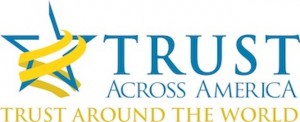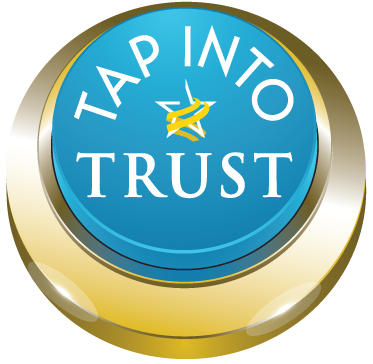Is Gender Diversity Profitable? That’s the title of a recent study published by The Peterson Institute. In its introductory abstract the study states: Analysis of a global survey of 21,980 firms from 91 countries suggests that the presence of women in corporate leadership positions may improve firm performance.
Trust Across America-Trust Around the World is encouraged by this research and employed it as a steppingstone for a study to test the following hypothesis:
Does the percentage of women on boards positively impact the trustworthiness of public companies, and therefore, their performance?
Our methodology:
Our *FACTS® Framework data served as the basis to analyze the 5-year average FACTS® score for the Top 50 and Bottom 50 companies in the S&P 500.
We then matched the 100 companies (50 top and 50 bottom) to publicly available board composition data from the 2020 Women on Boards Gender Diversity Directory. For those unfamiliar with this program, the goal of 2020 Women on Boards is to increase the percentage of women on US company boards to 20% or greater by the year 2020. Women currently hold 18.8% of Board seats up from 14.6% in 2011.
Initial observations:
50 Most Trustworthy Public Companies
- An average of 23% women on boards
- Thirty companies above 20% women on boards, twenty below 20%
- In this 100-company universe Dr. Pepper Snapple Group had the highest percentage (44%) of women on boards.
50 Least Trustworthy Public Companies
- An average of 16.3% of women on boards or 43% lower than the Top 50 companies
- Twenty companies above 20% women on boards, thirty below 20%
- Four companies in the Bottom 50 had no women on their boards.
A few notable early findings:
Eight of the most trustworthy companies in our survey are in the financial services sector, often cited as one of the least trustworthy sectors. Of the eight, only JP Morgan Chase & Co. had less than 20% of women on their Board.
Nine of the least trustworthy companies are also in the financial services sector. Only one of the nine has a female board composition of over 20%.
This is why we like to say “Industry is not destiny.”
*Our FACTS® Framework
- Measures the trust “worthiness” of over 2000 public companies
- Across 16 sectors
- Over a period of 6+ years (since 2010)
- Including five quantitative indicators of trustworthy business behavior
- An audited portfolio performance track record vs. the S&P 500 is available for the period February 2013 to February 2016.
- Portfolio returns as follows: FACTS® returned 80% above S&P 500; FACTS® annualized 16.7% vs. S&P 500 9%
While our initial study supports The Peterson Institute’s findings, the hypothesis can only be proven, or disproven, with a more detailed analysis covering years of historical data and information. Further findings will be reported in the spring research issue of TRUST! Magazine scheduled for publication in late April and distributed at no cost to our Trust Alliance members.
Barbara Brooks Kimmel is the CEO and Cofounder of Trust Across America-Trust Around the World whose mission is to help organizations build trust. Now in its sixth year, the program’s proprietary FACTS® Framework ranks and measures the trustworthiness of over 2000 US public companies on five quantitative indicators of trust. Barbara is also the editor of the award winning TRUST INC. book series and the Executive Editor of TRUST! Magazine.
Contact: Barbara@trustacrossamerica.com
Copyright © 2016, Next Decade, Inc.



Recent Comments